Related Research Articles

Francesco Menzio was an Italian painter.
Ferdinando Fontana was an Italian journalist, dramatist, and poet. He is best known today for having written the libretti of the first two operas by Giacomo Puccini – Le Villi and Edgar.

Vincenzo Irolli was an Italian painter.
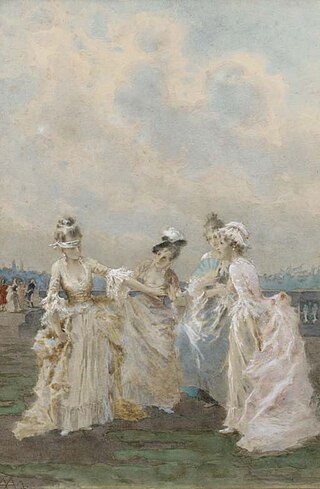
Angiolo Achini was an Italian painter.

Francesco Paolo Michetti was an Italian painter known especially for his genre works.
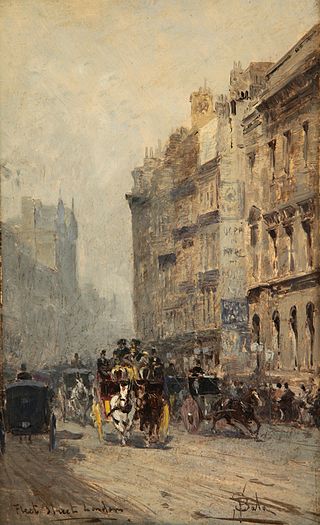
Paolo Sala was an Italian painter, mainly of vedute and genre scenes. He often painted dal vero, that is, en plein air. He was also known for his ability to paint animals in rural scenes. He founded the Lombard association of watercolor painters in 1911.
Giuseppe Raggio (1823–1916) was an Italian painter.
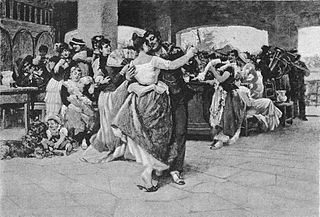
Egisto Lancerotto was an Italian painter, mainly of genre scenes of Venice.
Ignazio Villa was an Italian sculptor of mainly mythologic and sacred scenes, as well as portraits.
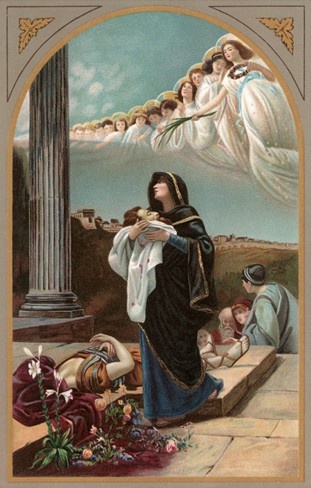
Ponziano Loverini was an Italian painter, known primarily for his canvases and frescoes of sacred subjects.
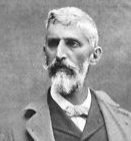
Luigi Nono was an Italian painter, known primarily for his genre scenes depicting life among the poor.
Domenico Pesenti was an Italian painter and antiquarian. He painted mainly vedute.
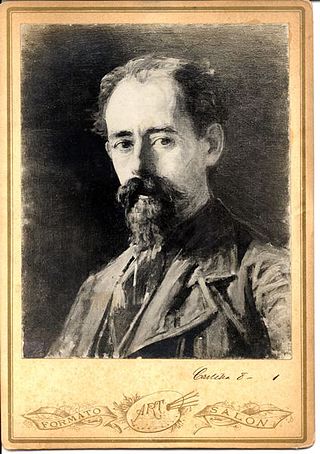
Gioacchino Toma was an Italian art instructor and painter, noted primarily for historic, realistic and genre subjects in a Romantic style.
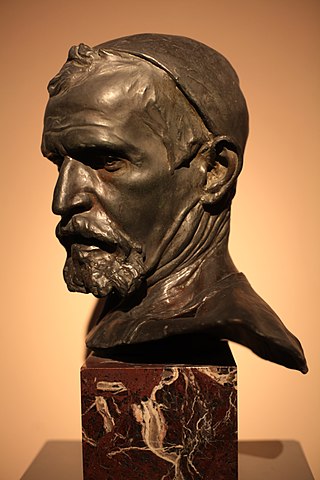
Achille Alberti was an Italian sculptor.
Salvatore Marchesi was an Italian painter, mainly painting interior scenes of churches. A roughly contemporary Salvatore Marchesi was a prominent Sicilian baritone.
Virgilio Ripari ) was an Italian painter, mainly depicting genre scenes of women and flowers. His style is described as a late Romantic, often depicting nuns and scene galanti.
Edoardo Raimondi was an Italian painter, known for landscapes and genre subjects.
Luigi Luvoni (1859–1904) was an Italian engineer and painter.
Raffaele Armenise was an Italian painter and scenographer, mainly painting history and genre subjects.

Angiolino or Angiolo Romagnoli was an Italian painter, mainly of genre subjects. He was part of the Macchiaioli painters who convened at the Caffe Michelangiolo. He is known for his fresco decorations meant to imitate Renaissance tapestries.
References
- ↑ Biography in Istituto Matteucci Website.
- ↑ Dizionario degli Artisti Italiani Viventi: pittori, scultori, e Architetti., by Angelo de Gubernatis. Tipe dei Successori Le Monnier, 1889, page 411.